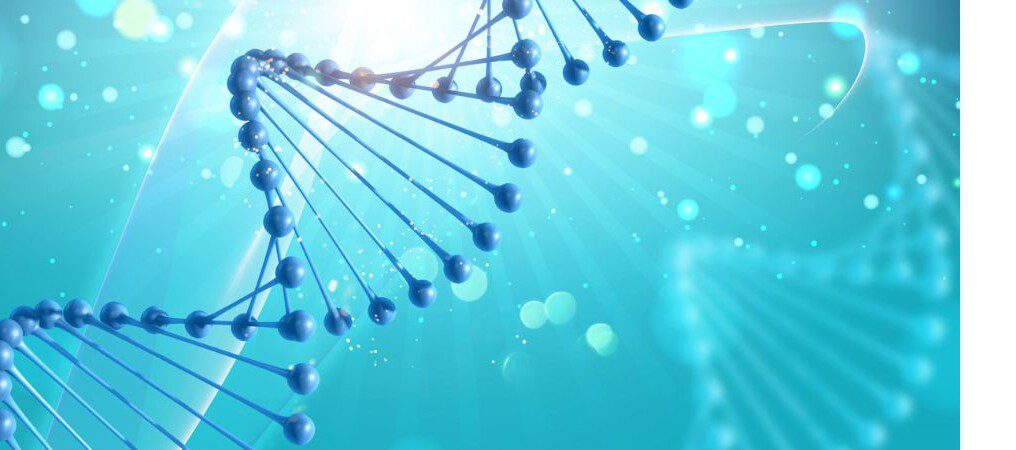
You know when someone says, “He’s the spitting image of his father,” or, “She has her mother’s eyes”?
People are actually talking about your DNA.
But you might be asking yourself – what will my kids look like? What DNA will I pass onto my children?
Of course, each child is half Mom and half Dad. But you might be surprised to discover what actually determines what your kids will look like. Let’s dive into the world of DNA to uncover what your future children are going look like.
The DNA Behind Your Child’s Looks :
First of all, let’s look at the science. A throwback to science class, anyone?
The human cells that determine the traits and appearance of your kids are known as DNA. DNA stands for the fancy scientific word Deoxyribonucleic acid.
You’re probably familiar with the DNA pictures of chromosomes. Every human has a total of 46 chromosomes. Your child will inherit 23 from each parent, one pair of which are the sex chromosomes (X and Y) which determine whether you have a boy or a girl.
The rest of the genes you pass onto your child will determine everything from the color of your baby’s hair to the ability to sing.
However, with over 30,000 genes, it’s impossible to make any precise predictions about your baby’s appearance. But you can make some educated guesses.
Read More: Which financial mistakes should women avoid?
How Does DNA Work? :
There are a set of genes that determine the combination of pigment for your children, such as eye and hair color. You can try to determine your baby’s eye and hair color by uncovering the eye and hair color that has been most prevalent among your family relatives.
What eye color did your parents, grandparents, and great-grandparents all have? Did male pattern baldness skip a generation or not?
By identifying the traits that are especially common within your family tree, you can take an informed guess about what your child will look like.
The Eye Color of Your Child :
Each gene has a strong (dominant) and weak (recessive) version of itself.
That’s why certain traits will be most visible even though your child inherited genes from both parents.
For instance, let’s say you have blue eyes and your partner has brown eyes. To guess the eye color of your child, you need to check out how prevalent blue eyes and brown eyes are on each side of the family.
If blue eyes are extremely common on both sides of the family, there’s a chance that your child will have blue eyes. However, blue eyes are a recessive gene, which means they only show up if your child doesn’t inherit a dominant gene that trumps it. So it is possible for your child to have blue eyes even though your partner has brown eyes, assuming that they inherit a recessive blue eye gene from your partner instead of a dominant brown-eye gene.
Even if your child doesn’t inherit blue eyes, that doesn’t mean your blue eyes are lost. It may be carried over into the next generation if your child passes on a recessive blue eye gene.
That’s why you can sometimes have a situation when neither parent has blue eyes, and yet, the child has blue eyes. This means that both parents had a recessive blue eye gene that they passed on to their child.
In the same way, if both you and your partner have brown eyes but have had blue-eyed ancestors (check the family album!) your baby might have blue eyes because each of you has some blue eye genes that you carry in your DNA.
The Hair Color of Your Child :
The same goes for your kid’s hair color.
Have you ever noticed that as children grow older, their hair color gets darker? This is because the pigment production process slows down as we grow up.
Even if both parents have a dark hair color, there’s always a chance that you’re carrying a blond hair color gene. Your child may even end up with red hair if you have red hair in your family.
However, hair color, like eye color, has recessive and dominant genes. Blonde and red hair are both recessive, and will only show up if your child inherits two recessive genes (even if it runs in your family).
More Like Mom or Dad? :
Have you ever heard the claim that many babies often look more like the father than the mother? Is it true?
Well, kind of. In evolutionary terms, the myth of paternal resemblance would create a greater incentive for the father to stick around to provide for the child and the mother since there is a theory that statesmen are more attached to children who are biologically related to them.
However, that doesn’t necessarily last very long as the child grows up.
And yet, there are plenty of examples of children looking a lot like their father. For example, check out how much Caleb James Goddard resembles his father Jack Nicholson at the same age.
Besides, even if the child resembles the father more, the child doesn’t have any more genes from the father. It’s always fifty-fifty.
But the child could definitely look a lot like one parent, and much less like the other.
Read More:
What Will My Kids Look Like? :
The answer to what will my kids look like is really a guessing game.
We cannot truly know the appearance of your children until they have been born. And yet, it’s always fun to imagine what your child will look like growing up.
It’s also a joy to look through old photographs of relatives and searching for indications of eye color or skin tone.
Did you enjoy reading this article? Check out our blog for more on family and parenting.
Read Also :




























